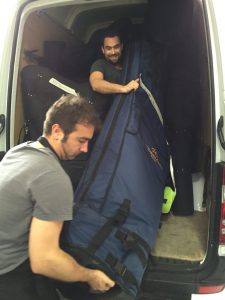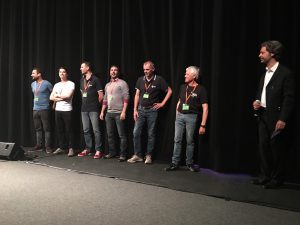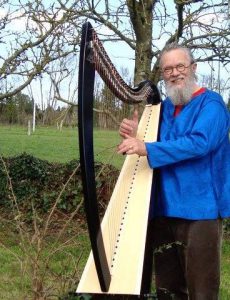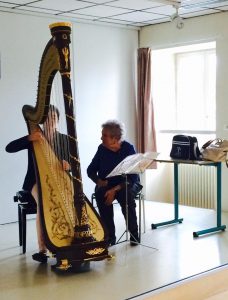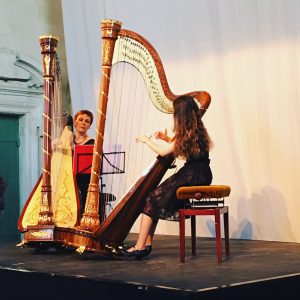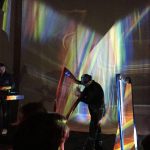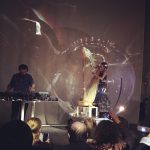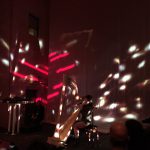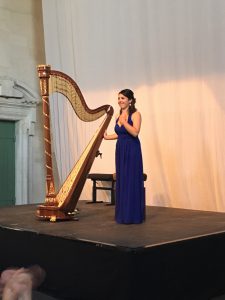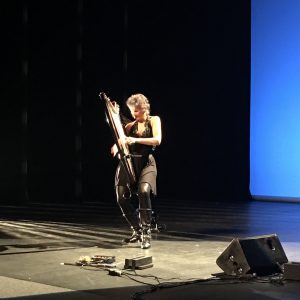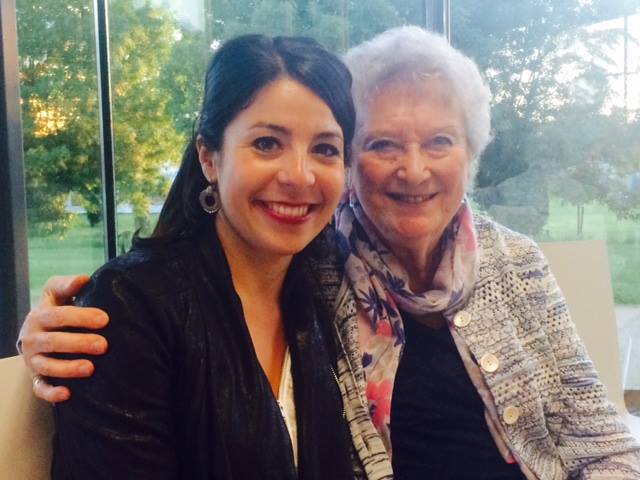Camac Blog
Harpes au Max 2016
News
May 19, 2016
It is no secret that chez Camac, we organise and sponsor festivals more than we do competitions. Competitions are important and necessary, and we do also support them – but our hearts are more in festivals, because they are more fun. Music is something we believe to be very spacious, very large. It is full of love for many things, many different styles and many different lives within it. Its infinite horizons unfurl better in the heady and joyful atmosphere of a festival, than during the tension of a competition.
Harpes au Max is a particularly special festival. Firstly, it takes place at home. The artistic relations team are constantly travelling, but the core of our team – the craftsman who make your harps – stay at our ateliers in Mouzeil. Harpes au Max, in Mouzeil’s local district of Ancenis, is a chance for us all to celebrate why we make harps, together. What would we do with our harps, if there were no artists who loved to play them?
Secondly, Harpes au Max is not actually organised by us. Instead, it is a collaboration between the civic authorities, and us as a local business. Jakez François is the artistic director, responsible for the programming, and we also supply the harps and organise the somewhat acquired art of transporting seventy-five of them to over sixty performances in three days. But everything else – the hotels, the airport pickups, the constant transport of artists throughout the region, the catering, the halls, the outreach work and the press – is done by the Municipal Community of the Pays d’Ancenis (COMPA). As Jakez said in his closing speech, Hélène Challain and her team at the COMPA had more or less come to know more about the harp than we do, including being able to give detailed explanations of the instrument’s development from the bow and arrow, to Erard’s double-action mechanism…
Apart from the fact that all this extremely intricate and absolutely essential organisation ran without a hitch, the COMPA’s involvement also means that Harpes au Max is not only a harp festival for harpists, but a harp festival for the general public. Without harpists, we would make no harps – and without the general public, there would be no musicians. Over five thousand visitors attended 2016’s festival, and every single event was packed. This enthusiasm and curiosity was mirrored by the COMPA’s team of sixty-five volunteers, who donated their bank holiday weekend more or less 24/7 to this celebration of our instrument.
Myriam Serfass, who was here with her ensemble Harpo Mélusine, asked her driver about how he came to volunteer:
“I was watching The Voice with my wife, and I really enjoyed it. So I googled Lena Woods, who was on it. I found Harpo Mélusine’s blog, on which there’s something about Lena, because she was one of your students. You also had a link to Camac Harps. And I said to myself: I know Camac, they are local to me! I went to the Camac site, found Harpblog, and the information about Harpes au Max! Et voilà, that’s how I signed up to volunteer at Harpes au Max.”
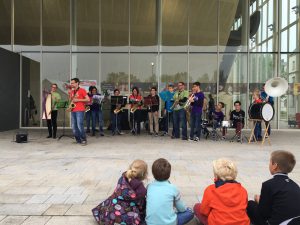
Las Familias – a band made up of families playing music together – open Harpes au Max with a rousing fanfare!
The festival programme itself could not have been broader. From factory tours to a special collection about the harp at the Ancenis town library, from a cinema programme to an opening fanfare, this was a festival in all senses of the word – of music, of the harp, and of regional business and culture. The festival village in front of the theatre celebrated local vintners and other produce; harps were displayed around town in the windows of shops and private houses. This is before we even get to the actual musical programme.
Jakez François’s festival concept is based around a set of top-level, multi-genre headline acts, and a touring carousel of harp ensembles performing up to seven times a day throughout the region. This year, we welcomed ensembles from Wales (Dynamic Harps); France (Harpo Mélusine and Hexarpa), Malaysia (Cempaka and Penang Harp Ensembles), and – winning the Camac Big Travel Prize – the Tasmanian Harp Ensemble.
They performed indoors, outdoors, in front of the Château and in the Super-U, at the train station, in the library, in arts centres, churches and market squares. They all got fit, repeatedly packing and unpacking the ensemble tour van, and formed unbreakable bonds with their lovely assistants, the Camac boys! Many thanks to all of them for working so hard, and giving such a lot of pleasure to their impromptu, delighted audiences.
Our ensembles’ achievements culminated in a big, joint concert in the Ancenis theatre on Sunday, May 13th. The Tasmanians had organised a backdrop of stunning photos of their beautiful island; the Malaysians taught the audience how to play the harp with a special song; Dynamic Harps combined pedal harps, lever harps and the DHC Blue Light. Myriam Serfass and Harpo Mélusine also featured song, electric guitar and Leonidas Rondon’s fabulous cuatro playing; Hexarpa is a professional ensemble, with ambitious own arrangements of big repertoire works. Each ensemble received a well-deserved standing ovation, and each brought something original to the stage.
The headline acts also presented what has to be more or less the complete spectrum of the harp. The festival opened with Harps of the World: the Turkish çeng (Şirin Pancaroğlu with Bora Uymaz, the Ukrainian bandura (Taras Yanitsky), the South American llanera (Eduardo Betancourt and Leonard Jacome, with Leonidas Rondon on cuatro), and – for the first time in France – the Chinese Konghou (Wu Lin).
At the same time, over at the Eglise du vieux bourg in Saint-Sulpice-des-Landes, Duo ars Celtica performed a quintessentially Celtic programme – or even, further back than the Celts, in the Druidic tradition. It was also a Camac first, being the first concert Myrdhin has given on the metal-strung Ulysse we have built especially for him.
Regardless of whether you had opted for world harps or druidic ones, the festival’s opening evening was far from over! Two later concerts also took place: jazz in the Ancenis Chapelle des Ursulines, with Tara Minton, Tom Early and Ed Babar, and Irish folk-pop with Ranagri in Riaillé. We are huge fans of both these bands, very different from each other and both creating wonderful new roles for both pedal and lever blue harps.
Saturday dawned, bright and early for a packed-out improvisation workshop with Deborah Henson-Conant in the Ancenis theatre. At big festivals, we often ask ourselves what the collective noun for a big group of harpists is – a shoal of harpists? A horde of harpists? A pride of harpists? A nightmare… Somehow Deborah managed to coordinate what can best be described as a throng, and have them all playing the blues by the end! At the same time, the academically-minded could head to the library, for a lecture by none other than Jakez himself about the history of the harp.
Turning to classical music, we headed in droves to the Ancenis Château for a lunchtime concert by two young talents from Isabelle Moretti’s class at the Paris Conservatoire: Aiste Baliunyte, and Marcel Cara. It is not easy to play a virtuoso programme with Isabelle Moretti and Marie-Claire Jamet sitting a couple of yards to your left, but we all left assured that the future of the classical harp is in good hands, not to mention iron nerves.
Saturday afternoon continued in a pedagogic vein, with two classes: a masterclass by Marie-Claire Jamet, festival patron, and a workshop on South American rhythms with our friends from Venezuela. We are all very honoured that Marie-Claire Jamet, grande dame of the classical harp and particularly the classical harp in France, accepted to be the figurehead of the festival. She is not only an exceptional artist in her own right, but also part of one of the most important bloodlines in harp history. Her father, Pierre Jamet (1893 – 1991), was part of Hasselmans’ harp class – and as well as being Jamet’s daughter, Marie-Claire Jamet was also Tournier’s last student. The “Hasselmans generation” of French harpists has profoundly influenced how we play the concert harp today. You can read a special interview with her on Harpblog here.
At this point, I should also mention that in fact it was Marie-Claire Jamet who opened the entire festival. Before the public programme began on Friday, a private concert was held primarily for the volunteers (otherwise too busy volunteering to attend all the concerts!), and the team at the COMPA. Marie-Claire Jamet performed the Fauré Impromptu, a succession of Debussy pieces, and Lolita la Danseuse, and we are all privileged to have heard it.
Saturday afternoon then saw the first of two “Classique à la Chapelle” concerts. This is a concept Jakez carried over from our fortieth birthday celebrations in Ancenis in 2012: a classical recital in two parts, the first from a young rising star, and the second from an established great talent. 2016’s Classique à la Chapelle began with Elisa Jouve, the young winner of the instrumental category in the the French TV show Prodiges. We were all hugely impressed with the quiet surety of her playing – again, under a lot of pressure – as well as that of her young colleague Jeanne Duquesnoy on viola. At the end of their programme, Elisa was joined by her teacher Ghislaine Petit-Volta, in a beautiful arrangement of the slow movement of Rodrigo’s Concierto de Aranjuez. The second half of this concert was given by Anneleen Lenaerts, who has been Principal Harp with the Vienna Philharmonic since the age of twenty-four (and about whom, more later).
And then – it was Saturday night, after all – things took a party turn. Saturday evening’s theatre concert was all about pop harp: Elisa Vellia with her trio, then Ranagri, and then none other than Deborah Henson-Conant herself, that night in Ancenis! A perfect warm-up for the big spectacle of the festival, which was still only just getting started at 11PM. The usually decorous environs of the Chapelle des Ursulines were transformed into a club, for a night created by Harpes au Max in collaboration with Paradise Prod. Tara Minton, Shelley Frost, Arnaud Roy, Eduardo Betancourt (harps), Betrand Depart (DJ), Dan Bono (DJ), Aurélien Lafargue (video projection) and Simon Boisson (light show) were: Harps au Club! We danced until four in the morning, and then carried on in the bar of the hotel, to the impromptu jamming of Eduardo Betancourt and Leonard Jacome.
- Eduardo Betancourt: Harpes au Club
- Shelley Frost in her bubble! Harpes au Club
- Tara Minton : Harpes au Club
To be honest, there were some rough sights at breakfast on Sunday morning. A few whispered greetings were exchanged, but a couple of strong coffees and an extra layer of make-up later and we were firing on at least three cylinders, and back at the Château. On arrival, we discovered that the hall was already so full that not even the Camac team could get inside to hear the young winners of our recent lever harp competition in Brittany, Dasson An Delenn. Many thanks to the clever volunteer who let us in through the back door, allowing us to enjoy lovely playing from Paul Vieuxloup, Nour Midouni, Aurore Esposito, Adèle Etaix, Céline Bourreau and Bleuenn Guillouard.
After Dasson An Delenn came the aforementioned Ensembles Concert. Given the events of the night before, it is a real credit to them that not only did none of us fall asleep, but we were all up and dancing, once again! Finally, a repeat of Classique à la Chapelle concluded the festival.
This last concert saw certain members of the Camac team do another back door trick, in order to be able to go twice. The festival had begun with a classical performance from a great artist, Marie-Claire Jamet. It ended with another classical performance from a great artist of the new generation, Anneleen Lenaerts. And really, it was what the French call trop beau, too beautiful. This is one of these very precise French expressions. “Too beautiful” in English is always somehow qualified: too beautiful to (something), too beautiful to last, for example. But trop beau evokes the experience of exceptional beauty without imagining any disadvantages. It’s the sort of beauty you hardly imagined possible, and as such which moves you to tears. This is because what great musicians do is open the window into realms of human achievement that dignify and ennoble. Many of us had to put the sunglasses back on that we had sported at breakfast that morning.
Deborah Henson-Conant and I shared the flight to Paris on Monday morning, so we were chatting in the airport. Deborah was telling me about her online school, an area of work she’s greatly developing, and the wide range of pupils who have signed up for it. “I really love to meet all these people who come from such different walks of life”, she said. “My role as a teacher is not to tell them my story – it’s to help them find theirs. It’s in telling their story that they can come to know themselves, discover and express where their passions lie.” Prior to Harpes au Max, Deborah had been to see us in Mouzeil (read about that here on her super own blog). “I’ve been really struck by the passion in this festival”, Deborah continued. “passion from the COMPA in committing to such a big event, passion from the artists and all the volunteers, passion from the audiences, and passion from the Camac team for what they do”. To put it another way: “this is our world”, said our senior technician Enric, as he and I cried on each other’s shoulders after Anneleen’s second recital. “All of this…”. . We all feel privileged to be doing what we do, inspired by the artists who play our harps, and the public who want to listen to them.
Last, but definitely not least – it’s official: the next Harpes au Max will be in 2018!

